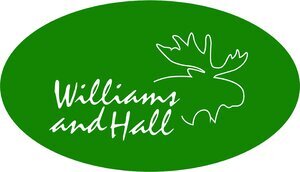BWCA Kids and Compasses
In a world full of technology, more and more of us rely on a GPS or our phones to get us where we’re going. We totally trust them to get us there. Through this process of “technology reliance,” the art of map reading is almost a lost art. Add into the mix the high art of reading a compass and most will say, “If I have to depend on map and compass skills, I’ll get lost, starve and die in the Boundary Waters wilderness.”
This is an alarmingly common theory we see more and more. It’s quite popular among those going into the BWCA wilderness for their first time (AKA BWCA Wilderness Virgins), and it’s especially popular among anyone born after 1995.
No Customer Left Behind
First off, don’t worry, everyone’s returned from their Boundary Waters canoe trips. We have an unofficial “No Customer Left Behind” philosophy. Though, several have come back with some pretty great stories of being disoriented for a while. A common cause is crossing the wrong portage and travelling down the wrong lake, but they all found their way home. It’s just more evidence to me of the need to learn and teach the skills of Boundary Waters Canoe Area map and compass reading before a trip into the BWCA or Quetico.
Learn To Use A Compass Before Your Trip
We had one such guest here a while back. To help himself out, he purchased a brand new compass before coming up. The evening before his trip began he decided he should take it out of the box so he wouldn’t have to carry the additional weight of the packaging. Turns out, this was his first time getting a look at his new compass and ,as it turned out, any compass at all.
It was only hours before he began his trip and he was just then trying to figure out how to use a compass. It isn’t really something you can cram into your brain in just a few hours. Thankfully, he had a buddy with him who knew how to use a compass and helped him out. But, by the end of the trip, he was a compass expert.
Is a Compass Essential in the BWCA?
Now, a compass in the Boundary Waters is not really an essential need. A good map can be extremely useful, and you can almost always track down another group who can help you out if you get lost. So, while a compass isn’t essential, there are cases where it can be very helpful, and in all cases it can be kinda fun
Teach Orienteering to Your Kids
Compass and map reading is a really cool thing to teach little kids and teenagers (and even other adults). How many times on a road trip have you heard, “How much further” and “Are we there yet”? Kids are pretty much the same on a canoe trip. They want to know where you’re taking them and when they’ll get there. They appreciate knowing what’s going on and teaching them how to follow along on a map is a fun skill for them to have. Then, when they get old enough, they’ll enjoy learning how to use a compass as well. Start by teaching the basics like how to find north. Then work your way into more advanced concepts. They love being a part of the adventure and navigation is a big part of a Canoe Trip in the Boundary Waters.
How To Learn to Use a Compass
Now where to start. Of course, there are dozens and dozens of courses and content online. It’s all really good. Here is a great article I like that’s very helpful.
Whichever route you take, learning and teaching map and compass reading skills in a great way to enrich your wilderness experience and is a valuable skill that can be passed on for generations.
Charlene


